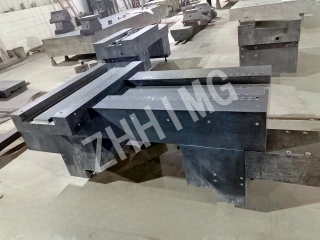Granite test benches are essential tools in precision engineering and metrology, providing a stable surface for measuring and testing various components. However, ensuring their stability is crucial for accurate results. Here are several strategies to improve the stability of a granite test bench.
Firstly, the foundation on which the granite test bench is placed plays a significant role in its stability. It is essential to use a solid, level surface that can support the weight of the bench without any vibrations. Consider using a concrete slab or a heavy-duty frame that minimizes movement and absorbs shocks.
Secondly, the installation of vibration-dampening pads can significantly enhance stability. These pads, made from materials like rubber or neoprene, can be placed under the granite bench to absorb vibrations from the surrounding environment, such as machinery or foot traffic. This will help maintain a consistent measuring surface.
Additionally, regular maintenance and calibration of the granite test bench are vital. Over time, the surface can become uneven due to wear and tear. Periodic checks and adjustments can ensure that the bench remains level and stable. Using precision leveling tools can help identify any discrepancies that need to be addressed.
Another effective method is to minimize temperature fluctuations in the environment where the test bench is located. Granite is sensitive to temperature changes, which can lead to expansion or contraction. Maintaining a controlled temperature can help preserve the integrity of the bench and improve its stability.
Lastly, securing the granite test bench to the floor can provide additional stability. Using anchor bolts or brackets can prevent any accidental movement, ensuring that the bench remains in place during testing.
By implementing these strategies, you can significantly improve the stability of your granite test bench, leading to more accurate measurements and enhanced performance in your engineering applications.
Post time: Nov-21-2024

